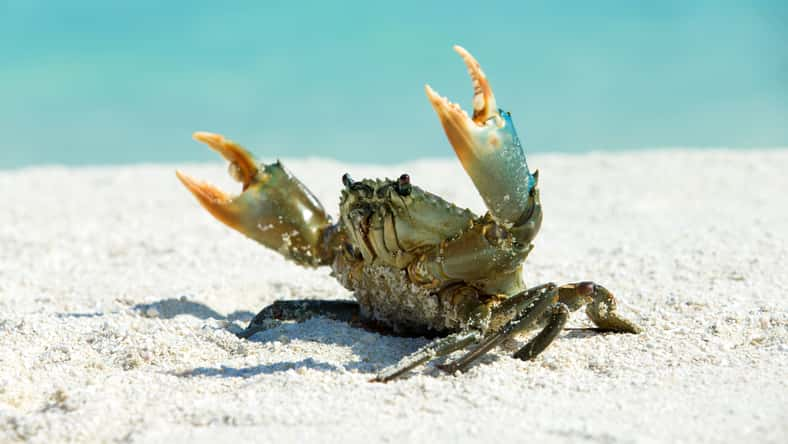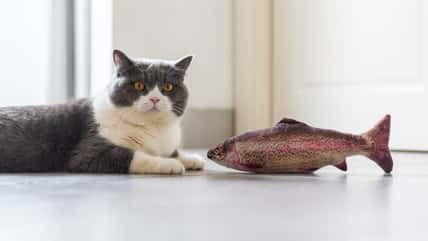Evolution Does Love Crabs, As Animals Keep Evolving Into Them, Leaving Scientists Puzzled

On our planet, evolution has spawned countless creatures of all shapes, sizes, and colors. But throughout Earth’s long history of evolving life, no other critter has shown up quite as frequently as crabs.
In 2020, a meme went viral, suggesting that all living things will eventually look like crabs. The joke is rooted in truth, though.
Crabs keep turning up in nature, and nobody knows why. The phenomenon has puzzled scientists for years, and it’s called “carcinization.”
Carcinization refers to the process of several independent groups of crustaceans evolving to take on a crab-like form. The term was coined in 1916 by an evolutionary biologist named L.A. Borradaile.
Carcinization is a recurrent theme in the evolution of crustaceans. Luckily, the trend does not seem to be in the stars for humans.
The main features that a crustacean develops to become a crab include a wide, flat, rounded shell, and a folded, tucked-in tail.
The tails of carcinized crabs are mostly concealed beneath their bodies. It’s important to note that not all crabs are true crabs.
For instance, the blue crab and Dungeness crabs, which are part of the Brachyura group, are considered true crabs because of their classic crab-like shape.
On the other hand, Anomura, such as hermit crabs and king crabs, only developed a similar shape through carcinization.

Pakhnyushchyy – stock.adobe.com – illustrative purposes only
During carcinization, a crustacean usually begins with a longer, narrower shell and an exposed tail. Over time, it adopts a rounder, flatter, crab-like appearance.
As a result, the crustaceans all look like they’re part of the same crab family, but in reality, they are not related to each other.
A study published in 2021 in the journal BioEssays showed that the defining characteristics of crabs were found in at least five different crustaceans over the past 250 million years.
Within the Anomura group, the crab shape emerged at least three times. It is believed that Brachyura and Anomura shared an ancestor that had not yet been carcinized.
Carcinization can also be reversed through a “decarnicization” phase, where they lose their crabby shape.
This process has occurred at least seven times. Carcinization often happens when organisms live in similar habitats.
Over time, they will evolve to have similar traits. However, it can also take place in organisms living in different regions of the world and at different times.
Since carcinization happens repeatedly, it indicates that there is some sort of evolutionary advantage to the crab-like shape.
Scientists are trying to get to the bottom of why that is. In recent years, interesting speculations have been made. One theory is that the flat, round form of a crab’s body makes it easier to burrow and scuttle sideways on the sand.
That way, they can quickly evade danger and keep a lookout for predators. Additionally, the round, compact shape of a crab does not provide much surface area for predators to grab onto. Still, more research is needed to confirm these ideas.
In short, carcinization is an example of how crustaceans respond to environmental challenges. By studying carcinization, scientists could learn to predict what features evolve in organisms over millions of years.
Sign up for Chip Chick’s newsletter and get stories like this delivered to your inbox.
More About:Animals





